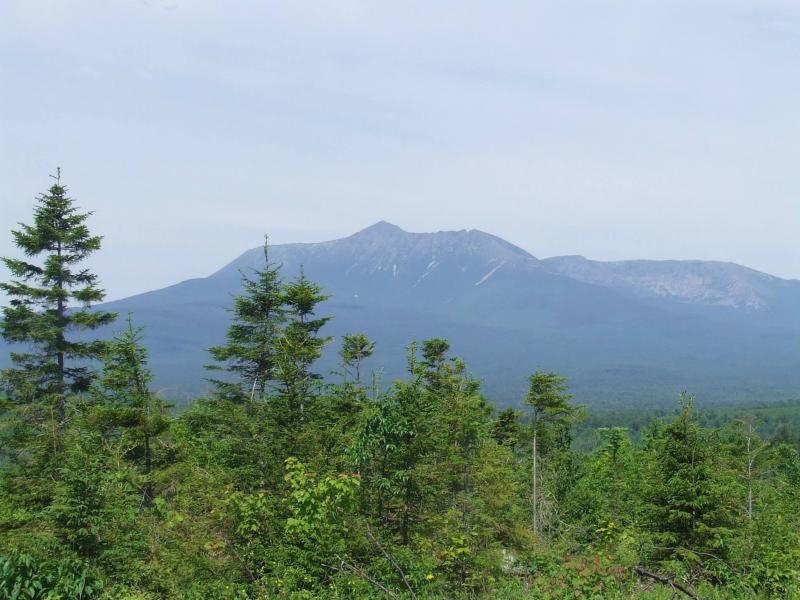Birding on proposed National Park land
Over the weekend we had the opportunity to lead a birding expedition to an area north of Millinocket known by many as the proposed national park lands. It was exciting to be birding an area that currently little known by birders — we felt like birding pioneers! The lands may someday encompass about 150,000 acres of both national park and recreation area extending east from Baxter State Park and including portions of the east branch of the Penobscot River and beautiful pristine lakes, ponds, and mountains. Our half-day birding excursion gave us only enough time to sample a small portion of the area so we focused on a tour around the Katahdin Loop Road which is a newly opened 15-mile, one-way loop road. The road is dirt but has been decently graded to make it easily passable even for cars with decent clearance.
These lands hold a diversity of habitats that support a vitally important reservoir of Maine’s breeding birds. We heard lots of the buzzy “I’m so lazy” songs of the black-throated blue Warbler in the expansive forests of beech and yellow birch. In fact Maine’s forests are thought to hold more breeding black-throated blue warblers than anywhere else in the world—nearly 20% of the entire world population!
Near the entrance to the Katahdin Loop Road we took a short hike to a stunningly beautiful pond overlook and then an esker-top trail through spruce-fur forest. A pair of blue-headed vireos cavorted nearby, singing and gathering food for a nearby nest. A common nighthawk flew over with the mountains behind it. All around us were the echoing songs of white-throated sparrows with their classic whistled “Old Sam Peabody-Peabody-Peabody.” A boreal-specialty black-backed woodpecker flew in and landed on a dead tree as we hiked the esker, and a boreal chickadee — the brown-headed cousin of the familiar black-capped chickadee—gave a brief view to a few of our group. Magnolia warblers and Nashville warblers seemed to be everywhere.
The numerous birds aren’t the only reason to move slowly along the road. The week before our trip, on a quick scouting trek to the area, we came around a corner and caught a glimpse of a mother moose with a calf in a small clearing. Around another corner, we had an even more unusual experience: as we eased our vehicle around the curve, there was a black bear foraging along the side of the road. Our own experience in Maine has been that the few times we have seen a black bear, it darted off very quickly. Perhaps the strong breeze that day kept the bear unaware of the car; we were able to watch it for nearly five minutes before it figured out we were there and scuttled away.
A stop at another small walk into another pond overlook yielded great views of a pair of adult Rusty Blackbirds feeding their newly fledged young along the pond edges. This was especially heartening, given that this species has seen massive population declines — as much as 95 percent or more in recent decades.
At about mile five of the Katahdin Loop Road is a scenic overlook that provides one of the most dramatic overlooks anywhere in Maine of Mount Katahdin. Through the telescope, we enjoyed seeing hikers moving along the ridges, before the sweet song of a fox sparrow lured us along to the next birding stop.
The Katahdin Loop Road is open to the public, and all are invited to go and explore them. For more info, visit the website of the Natural Resources Council of Maine www.nrcm.org.
Event Date
Address
United States




































